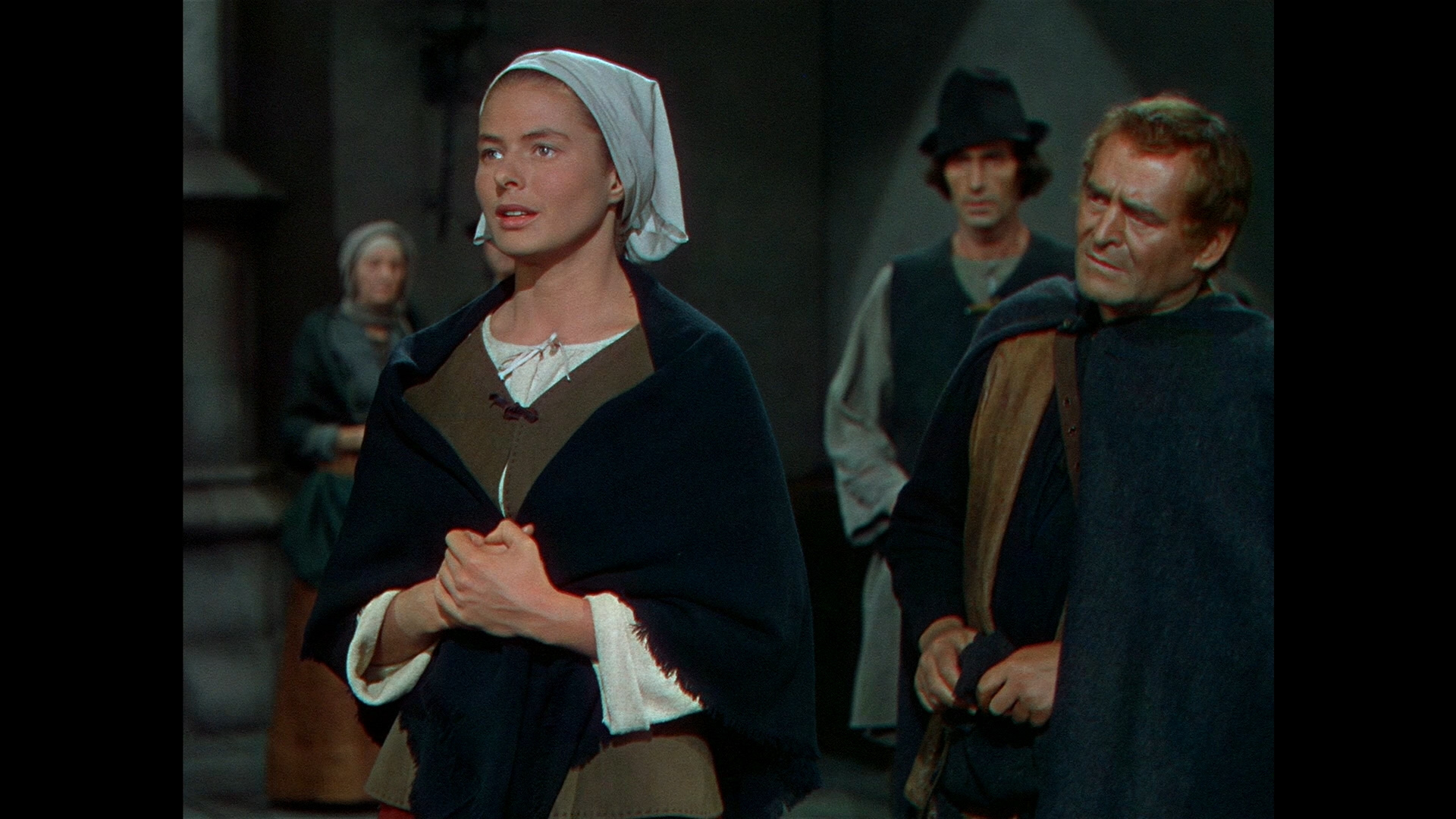Ingrid Bergman In A Restored Hollywood Epic
DIRECTED BY VICTOR FLEMING/1948
STREET DATE: MARCH 27TH, 2018/KINO LORBER STUIO CLASSICS
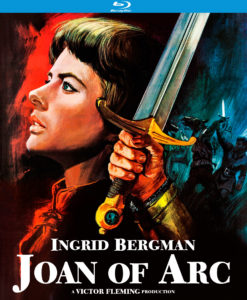 Kino Lorber’s second restoration this month of a medieval historical epic, following their 50th anniversary release of The Lion in Winter (1968), fast-forwards through approximately 300 years of British-French warfare to alight on the martyred, sanctified Maid of Lorraine and her nationalistic, religious standard-bearing across the battlefields of France. Co-adapted by Maxwell Anderson, with Andrew Solt, from the playwright’s 1946 stage production Joan of Lorraine; directed by Victor Fleming, whose last film this proved; and starring Ingrid Bergman, whose initial Hollywood career temporarily halted soon after the film’s release; Joan of Arc now represents as much of an historical artifact as the period and legendary figure it dramatizes. Produced independently by Sierra Pictures, whose entire one-film output these restored 146 minutes represent, the 70th anniversary of Joan of Arc constitutes a Classic Hollywood view of history, biography, and drama best captured in the advertising phrase, “A Cast Of Thousands!”.
Kino Lorber’s second restoration this month of a medieval historical epic, following their 50th anniversary release of The Lion in Winter (1968), fast-forwards through approximately 300 years of British-French warfare to alight on the martyred, sanctified Maid of Lorraine and her nationalistic, religious standard-bearing across the battlefields of France. Co-adapted by Maxwell Anderson, with Andrew Solt, from the playwright’s 1946 stage production Joan of Lorraine; directed by Victor Fleming, whose last film this proved; and starring Ingrid Bergman, whose initial Hollywood career temporarily halted soon after the film’s release; Joan of Arc now represents as much of an historical artifact as the period and legendary figure it dramatizes. Produced independently by Sierra Pictures, whose entire one-film output these restored 146 minutes represent, the 70th anniversary of Joan of Arc constitutes a Classic Hollywood view of history, biography, and drama best captured in the advertising phrase, “A Cast Of Thousands!”.

Shot in moody, desaturated Technicolor, Joan of Arc might prove an interesting triple bill with the candy-colored shades of director Fleming’s The Wizard of Oz and the burnt-crisp Southern vistas of his Gone With The Wind (both 1939) for the full palette range of the storied pictorial process. (With the aforementioned cast list scrolling down Joan of Arc’s multiple opening credits pages at a good five minutes alone, such a bladder-bursting viewing project might not prove advisable, though; while additionally sitting through Gone With The Wind’s Overture, Entr’acte, and Exit Music might induce kidney failure.) To say nothing else, as the pageant of medieval history sweeps by, there’s certainly a lot to look at in Joan of Arc.
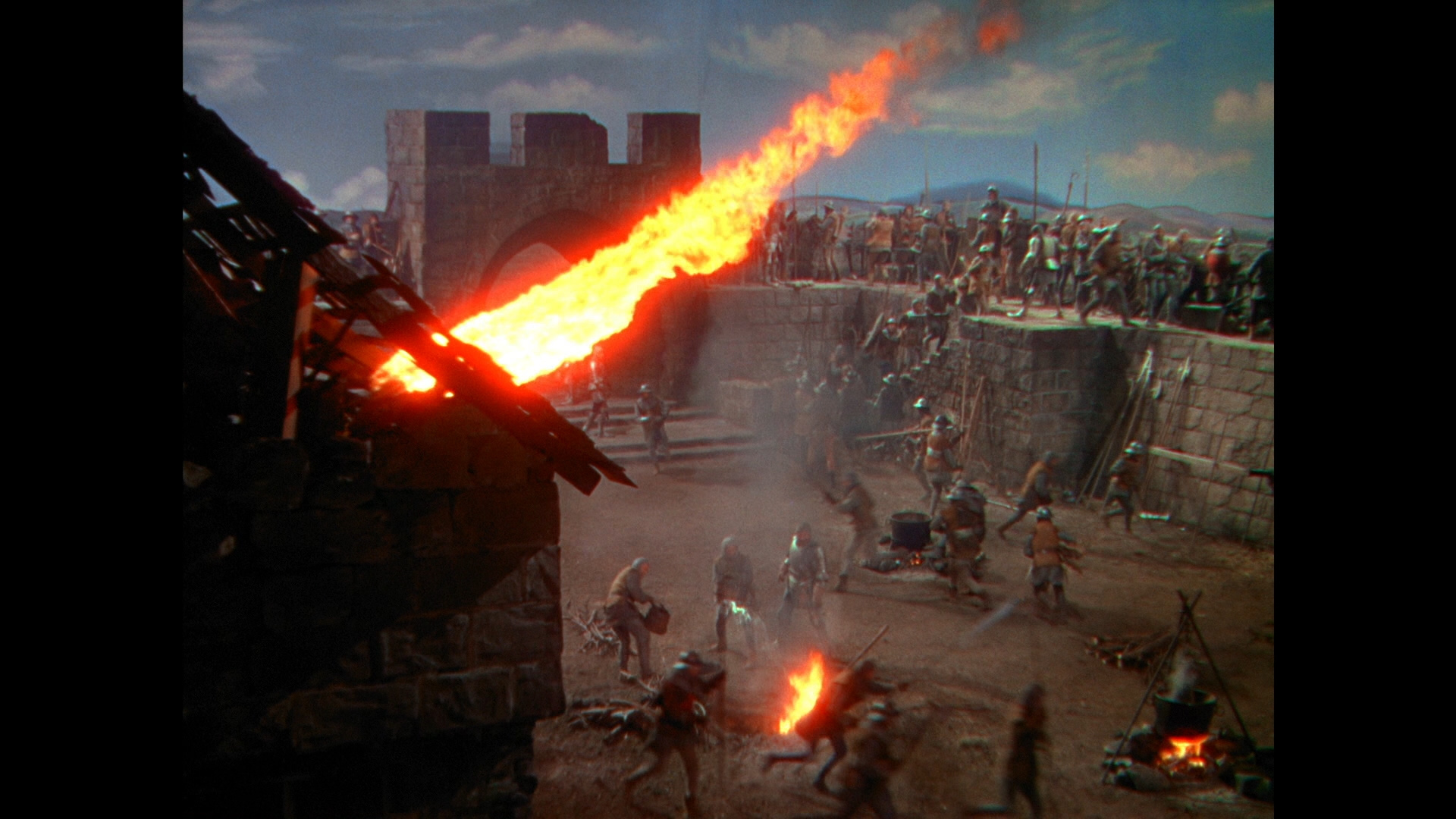

But pretty pictures may prove scant compensation for many viewers’ patience regarding often interminable scenes of historical pageantry filing across the screen in discreet and increasingly remote cameo views. The peasants, squires, and knights; followed by the ladies and gentlemen of court; followed by the Dukes, Dauphins, and Kings offering diminishing screen returns even as the priests, Bishops, and Inquisitors bring up the rear. One might get a certain exacting if numbing feel for French Medieval history from Joan of Arc, but possibly little insight into the actual people and personalities that make up that history.
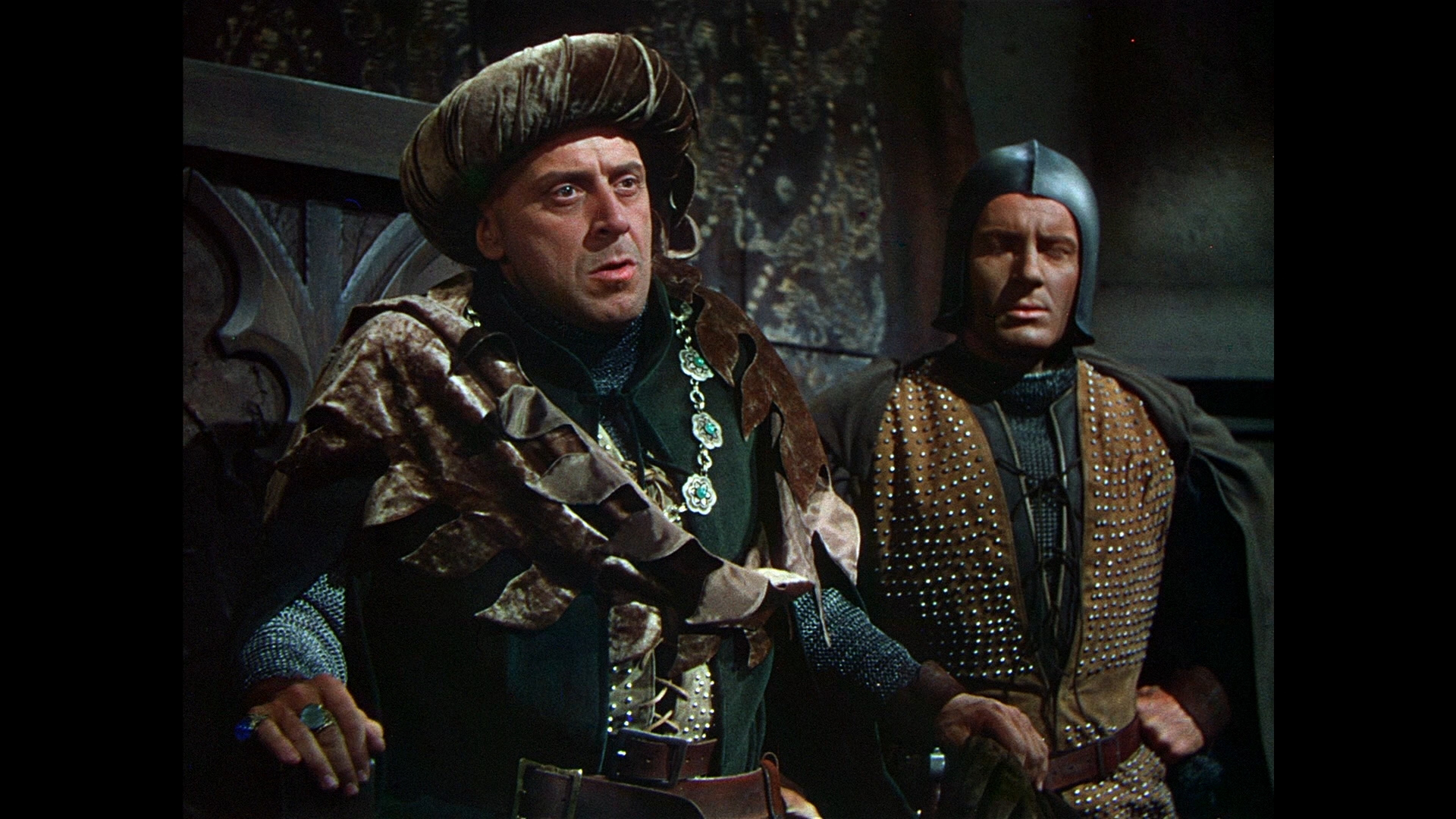
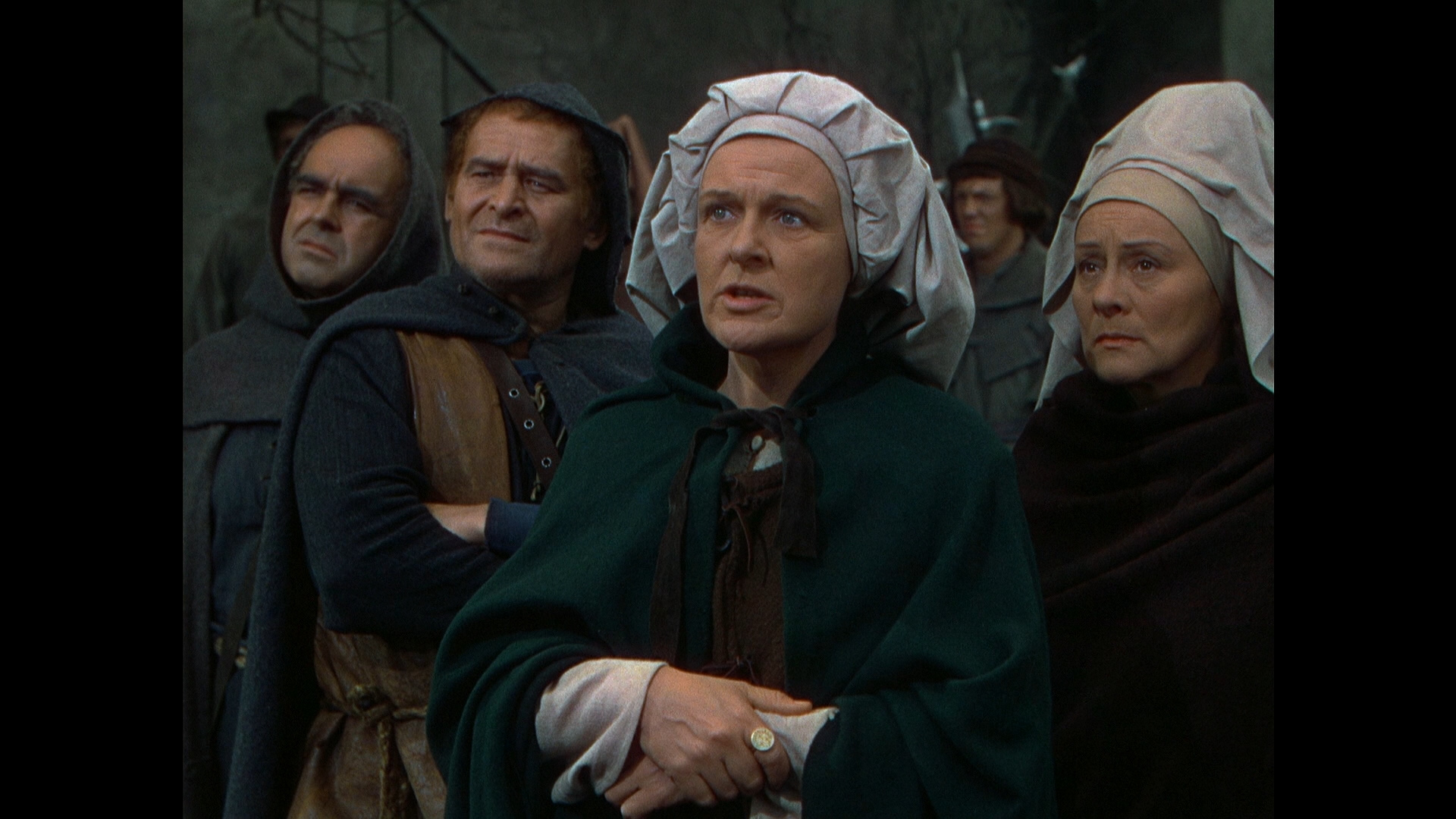

Across each historical view, the central performance of Ingrid Bergman carries the entire dramatic weight of the film on her confident shoulders, upright posture, and lithe stride. In peasant garb, male clothing, and ultimately head-to-foot armor, Bergman brings a keenly androgynous quality not only in keeping with what is known about the historical saint but also amply satisfying the leading requirement for what is loosely termed Star Power. Whether fearlessly advancing on a Burgundian stronghold or recoiling in terror at the untoward advances of a prison guard, Bergman admirably captures both the courageous and vulnerable qualities of the French teenage girl who led armies in victory, was later burned at the stake for witchcraft, and who was eventually canonized by the very institution who condemned her.

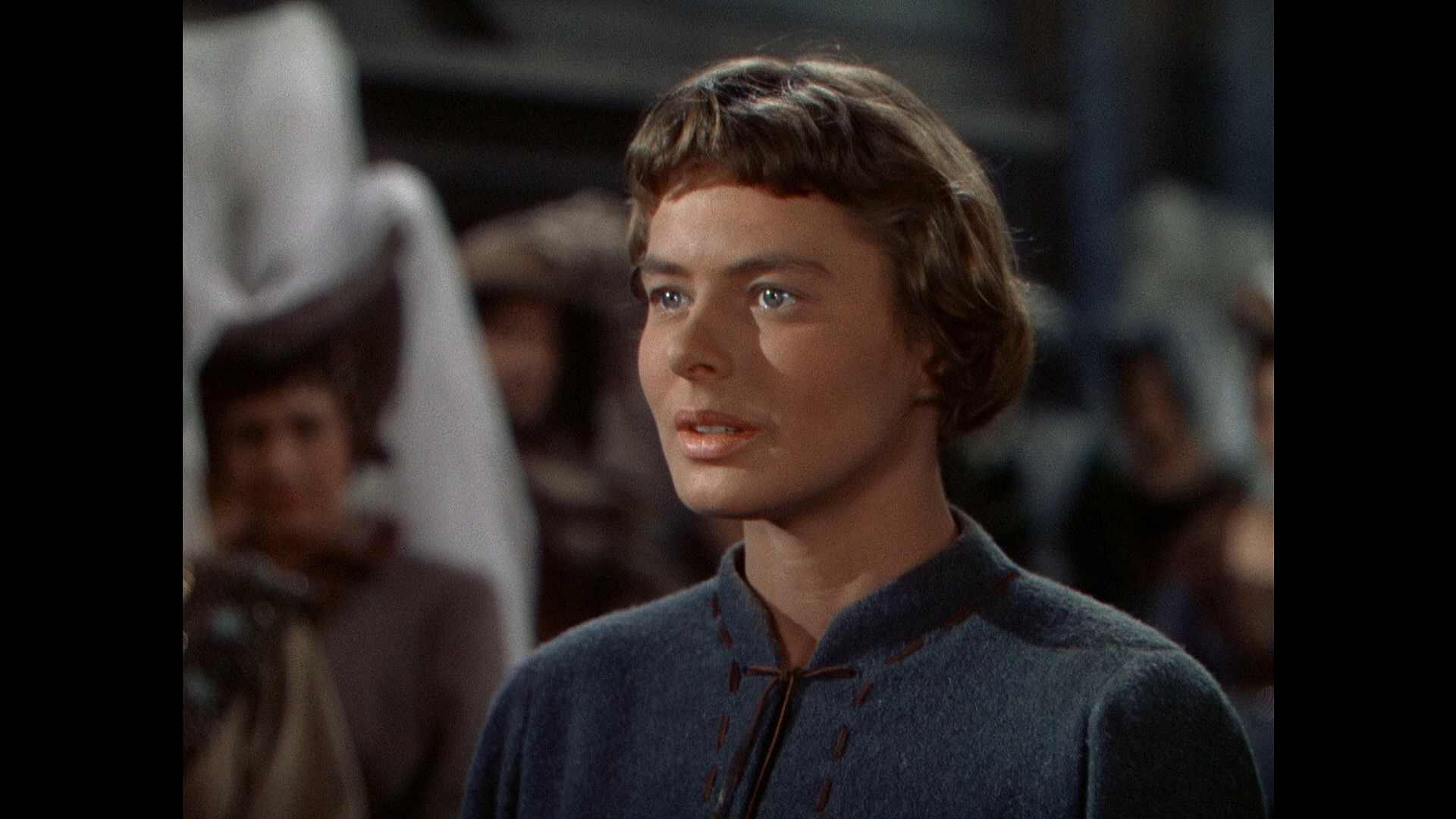

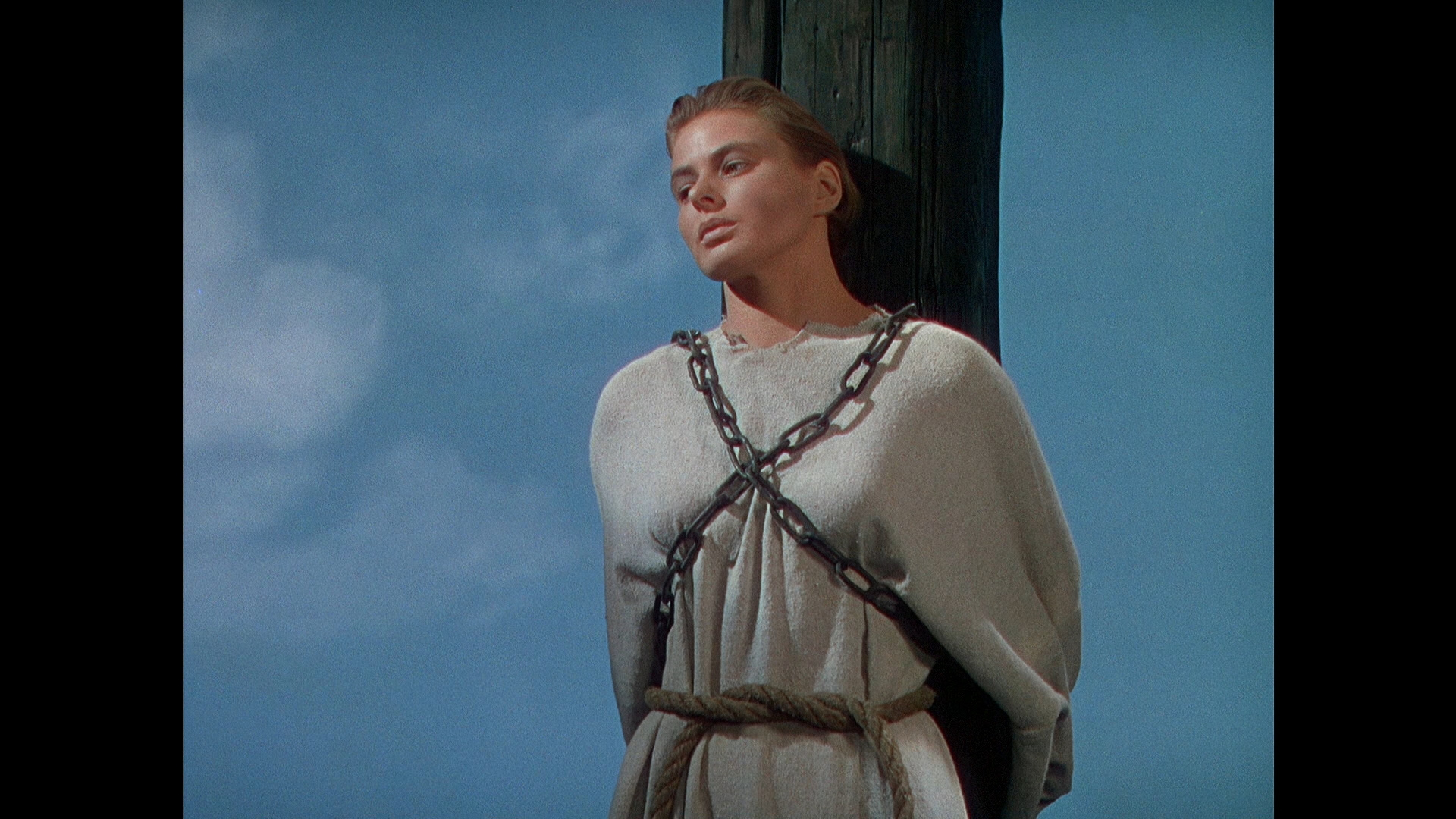
It is, unequivocally, a great performance, and among the film’s many equally admirable performers, Jose Ferrer’s credited screen debut, as the canny Dauphin; blustery Ward Bond, as a profanity-loving knight; J. Carroll Naish, as a treacherous and plotting Burgundian Count; and Francis L. Sullivan, as the hateful Head Inquisitor; make strong individual impressions across the otherwise numbing march of too-perfect imagery and over-production values.

Kino Lorber’s 2K presentation of Joan of Arc, representing its full, 2 ½ hour version that premiered in 1948, is currently the best home video version of the film’s unedited cut. Shorn of 45 minutes after the film’s initial release, the full version went unseen until restored to its complete length on DVD in 2004. And while a feature-length commentary would have been very welcome to this viewer – as I think the stories behind the making of this film might prove even more interesting than the film itself – the Blu-ray comes without special features beyond a gallery of Ingrid Bergman-related trailers. For fans of history, pageantry, and especially Ingrid Bergman, though, KL’s crisp, vivid transfer of Joan of Arc should prove essential viewing/owning.
The images used in this review are credited to DVDBeaver and are taken directly from Kino Lorber’s March 2018 Blu-ray release of 1948’s Joan of Arc.
